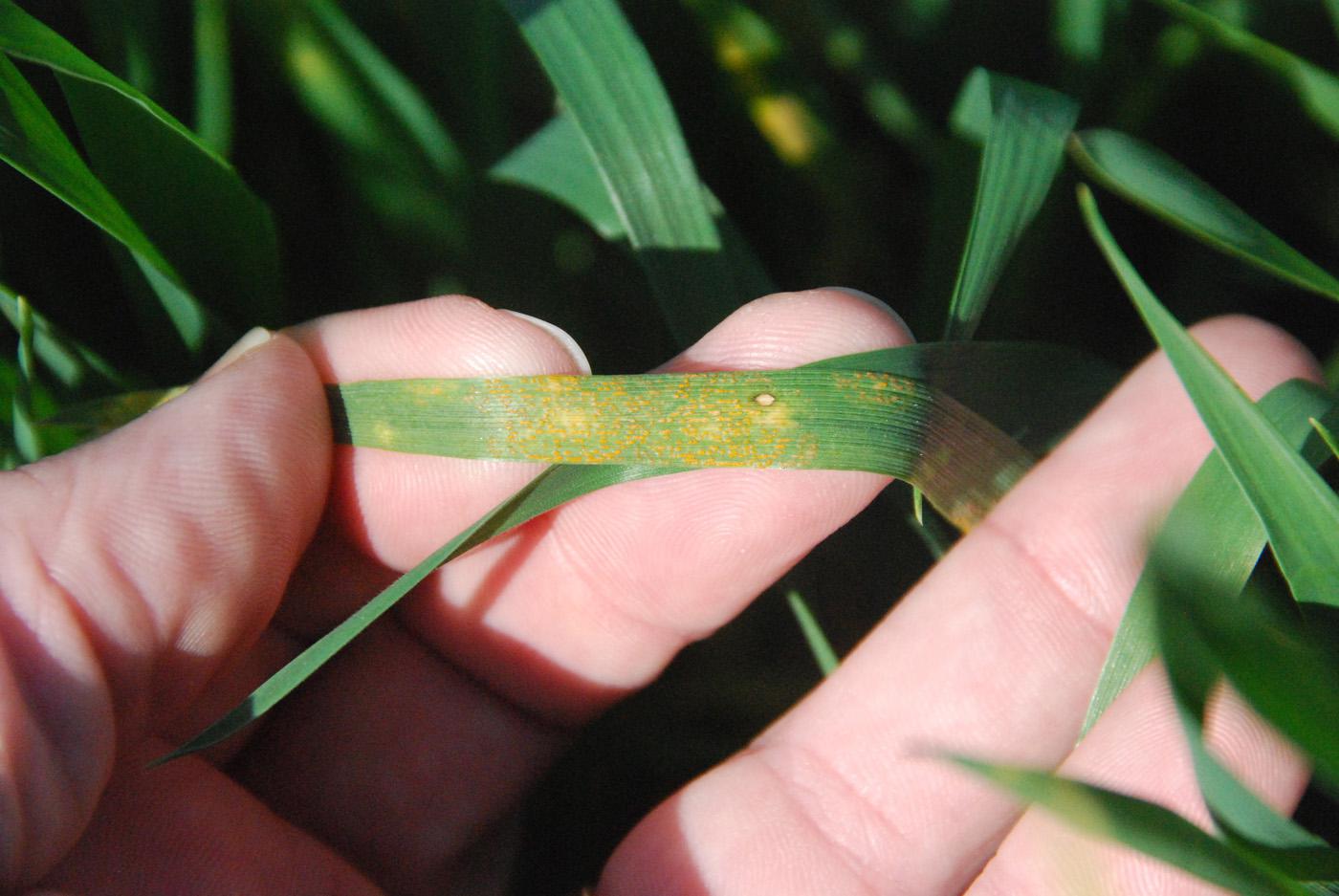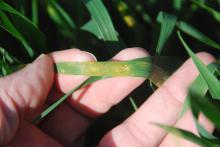Information Possibly Outdated
The information presented on this page was originally released on February 10, 2012. It may not be outdated, but please search our site for more current information. If you plan to quote or reference this information in a publication, please check with the Extension specialist or author before proceeding.
Stripe rust, late freeze threaten state's wheat
MISSISSIPPI STATE – Wheat stripe rust was spotted in Mississippi and Arkansas in January, an unusual occurrence this early in the year made possible by the warm and wet winter.
These occurrences are the first reports of the disease east of the Rockies this year.
Tom Allen, Mississippi State University Extension plant pathologist at the Delta Research and Extension Center in Stoneville, said the rust was spotted Jan. 27 in Arkansas and is more widespread there than in Mississippi. On Jan. 30, a consultant spotted the first wheat stripe rust in Mississippi in Bolivar County, and on Feb. 6 a second field of infected wheat was identified in Sunflower County.
“The field in Bolivar County has infected plants in a localized area along the southern edge of the field, so the affected area was quite small,” said Allen, who also conducts research for the Mississippi Agricultural and Forestry Experiment Station. “The field in Sunflower County has much larger areas of affected plants. Stripe rust development is typically favored by temperatures between 50 and 65 degrees Fahrenheit, heavy dews and intermittent showers, which create high humidity.”
This winter’s weather has created an ideal environment for stripe rust. The fungus that causes stripe rust blows in annually on wind currents from Central America and historically has been detected much later in the growing season.
“With the mild winter temperatures and the frequent rainfall, finding stripe rust is not unexpected,” Allen said.
As of early February, specialists are suggesting no fungicide applications yet for wheat fields. Wheat is more susceptible to rust diseases in early growth stages and becomes more tolerant with age.
“Presently, it is important to determine the specific wheat variety planted in each field and determine that variety’s resistance to stripe rust and other important yield-limiting diseases,” Allen said. “If a particular variety is labeled as moderately resistant or resistant, monitoring for the disease will likely be more economical than simply making a fungicide application.”
Rust diseases are a serious threat to wheat but are not normally treated during the crop’s vegetative stages. The same conditions that promoted development of the disease also moved wheat out of its normal winter dormancy.
Erick Larson, Extension grain crops agronomist, said freeze damage is a bigger threat to the crop right now than the early appearance of stripe rust.
“Wheat needs to be dormant during the winter and then grow slowly through February. It should not really hit its stride and grow actively until early to mid-March,” Larson said.
“The warm weather that we’ve experienced this winter has prompted wheat to begin growing much earlier than normal, which poses a serious threat for freeze damage later this spring, particularly if we have a hard freeze during March or early April,” he said. “When wheat is still 4 to 6 inches tall, it is much more tolerant of freezing temperatures than it is at later growth stages, especially near heading.”
Larson said the biggest concern now is that a late spring freeze would significantly diminish wheat yield. Later in the season, growers will have to make decisions on how best to manage stripe rust in their wheat fields.








